Top Tier CPU Air Coolers Q3 2015: 9-Way Roundup Review
by E. Fylladitakis on July 6, 2015 8:00 AM ESTThe Logisys (DeepCool) Gamer Storm Assassin
Founded back in 1996, Deepcool (Logisys in the North American markets) is one of the oldest CPU cooler manufacturers. They are not a very well known brand name because they primarily focused on server and OEM coolers, not retail products. However, their recently launched "Gamer Storm" range comes to change that, with direct focus on retail products for advanced users. Deepcool provided us with their "Assassin" cooler for this review, the highest performance CPU cooler they currently market.
Deepcool supplies the Assassin in a very tall, large cardboard box with a relatively simple, dark artwork theme. Everything is exceptionally well packed inside the box, with everything protected inside secondary boxes and layers of polyethylene foam. The bundle consists of the hardware necessary for the mounting of the cooler, a fan power cable splitter and a Molex power adaptor, a tube of quality thermal grease, a metallic case badge and six wire clips for up to three cooling fans.
The Deepcool Gamer Storm Assassin is a very large and heavy dual tower cooler. It weighs more than 1.5 kg with both fans installed, making it one of the heaviest CPU coolers in existence. Each tower consists of fins forming a jagged saw tooth formation on one side and a complex geometric pattern formed of tetrahedrals and squares on the other side. Strangely, the towers are physically identical, yet they are reversed, meaning that one fan will be facing the jagged side of the fins and the other the complex tetrahedral-square pattern. This makes us unsure whether that strange pattern is for aesthetic purposes only or if it actually improves performance in any way. There are no openings for a screwdriver, therefore the center fan needs to be uninstalled during the installation/removal of the cooler. Furthermore, a Philips PH2 or a slotted 3.2 mm - 4 mm screwdriver with a shank longer than 150 mm is necessary. There is no tool provided in the box, therefore do make sure that you have an adequately long screwdriver available.
Deepcool provides two cooling fans alongside the Assassin, one 140 mm and one 120 mm fan. The 140 mm fan is to go in between the two towers, while the 120 mm fan on either side of the cooler. The company is obviously not using two 140 mm fans in order to provide some clearance to the RAM slots, which would be completely blocked if a 140 mm fan were to be mounted at the front side of the cooler.
The fans come from Deepcool's own UF range, have dual ball bearings and anti-vibration frame covers. A strange fact is that the 140 mm fan is faster than the 120 mm fan, with a maximum speed of 1400 RPM and 1200 RPM respectively. Deepcool is the only company that follows this approach, as the rest of the manufacturers with asymmetric fan setups seem to prefer the opposite, in order for both fans to have about equal airflow.
The base of the Assassin is very long, with eight 6 mm heatpipes running through it. This is another strange approach as there is no CPU long enough to make full contact with a base this long. It does not mean that the heatpipes near the edges of the base will be useless but it is unlikely that they will function at maximum efficiency. Both the copper base and the heatpipes of the Assassin are nickel plated, with the contact surface polished down to a perfect mirror finish.


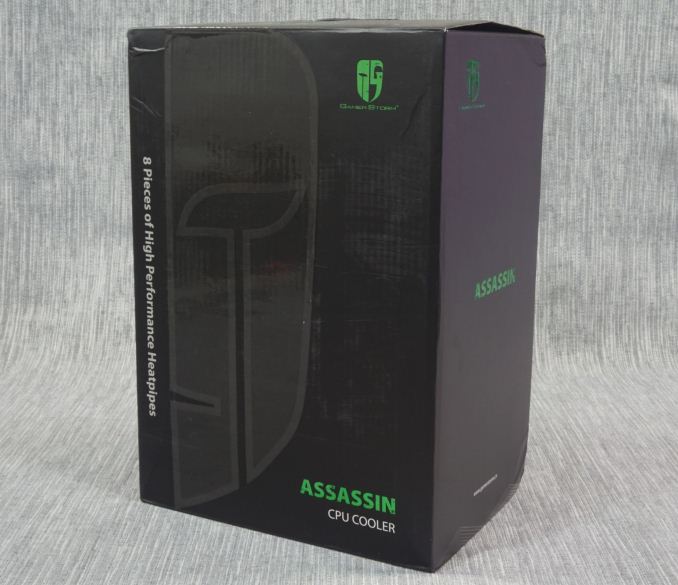
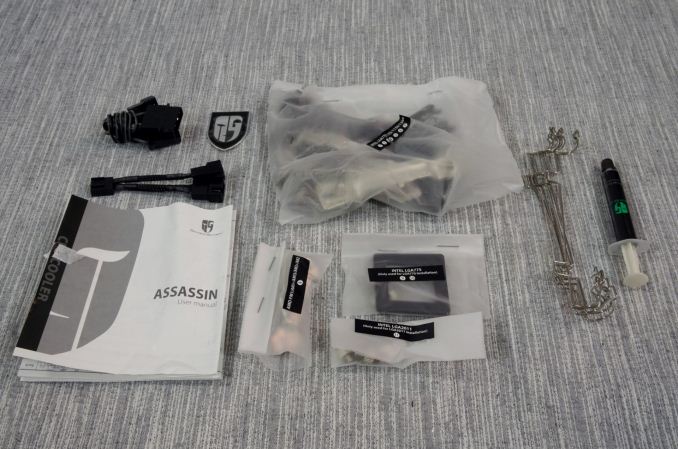
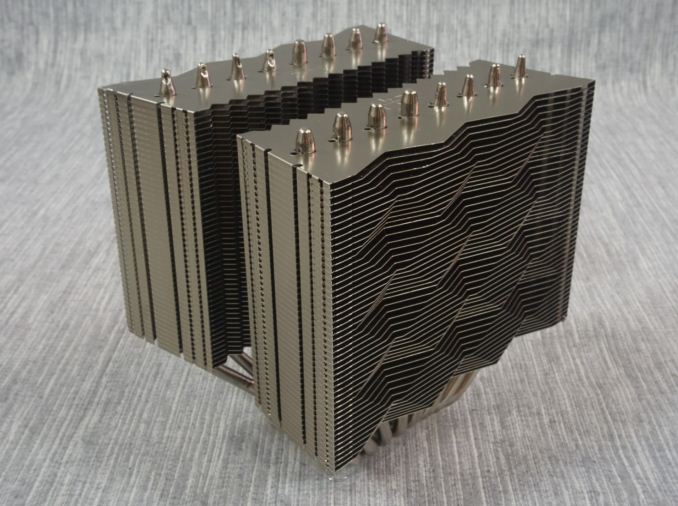
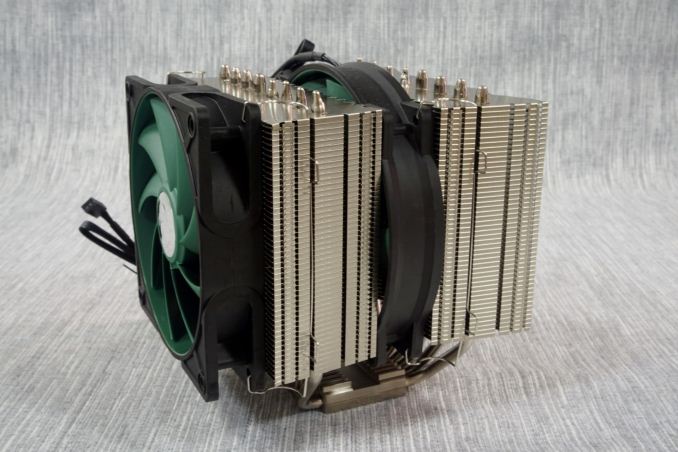
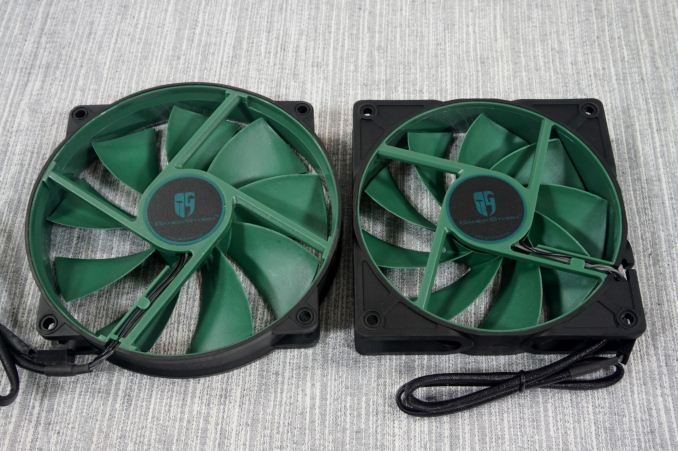









135 Comments
View All Comments
Peichen - Monday, July 6, 2015 - link
I expect many R9 Fury X users are shopping for large air-cooler now as they have to give up their AIO CPU-cooler to Fury.BTW, I really wish you added a Hyper 212X as reference.
meacupla - Monday, July 6, 2015 - link
You could just buy a case like the Fractal Design Define S, which could fit two separate 120mm CLLC in the front, allowing both to get fresh air.Flunk - Monday, July 6, 2015 - link
I'm a bit disappointed that you didn't comment on the install process on any of the heatsinks. I recently bought a Dark Rock Pro 3 and while I love how quiet it is and the temps are actually lower than the Corsair Hydro H80 it replaced, the install process requires you to screw the heatsink in from the back of the motherboard. That and the size of the supplied backplate made the heatsink install more difficult that is really necessary.If you buy a Dark Rock 3 Pro I recommend removing the motherboard from the case entirely and installing it by flipping the heatsink upside down and balancing the motherboard on top of it in the correct position. This makes it fairly easy to screw in. But if you are using a normal thermal paste you might need to put it on the heatsink instead of the CPU heatspreader. I use IC Diamond and that stuff is so thick that it just stuck there upside down for long enough to finish mounting the thing.
meacupla - Monday, July 6, 2015 - link
Yeah, this is actually quite important. Noctua's mounting brackets are, by far, one of the easiest to work with.'nar - Tuesday, July 7, 2015 - link
I never gave it much thought. Installation is such a small concern to me, maybe I do this more than most, price and performance are preferable. That said, I still think Noctua's mounting can be improved, it seems unnecessarily complicated to me. First off, you really do need to replace the plastic bracket, there's no way around that. But secondly, why include a 140mm screw driver? Why not make the screws 140mm taller? Then you can just use a common screw driver, even a stubby or a pocket knife. And make them captive so they do not fall out and you do not need to line them up. These will certainly add to the cost due to extra engineering time and unique screws.Beany2013 - Wednesday, July 8, 2015 - link
Because the 140mm screwdriver:A: Is cheaper than re-engineering the entire product
B: long screws are *very* easy to cross-thread due to the extra sideways torque you can apply when inserting them.
I *do* like the Noctua setup system. It's strong, comprehensive, and lets be honest, you only do it once. I'm pretty sure that any gotchas with installation were caught in the descriptions of each cooler, too.
der - Monday, July 6, 2015 - link
WOOOO!golemB - Monday, July 6, 2015 - link
For the Macho Zero especially, I'd want to see the tests conducted (additionally) in a vertical motherboard orientation (as you'd have in most tower cases), since convection may have an effect on performance. It may also reveal differences in fan noise due to bearings rubbing more or less on different surfaces.'nar - Tuesday, July 7, 2015 - link
Not likely. Convection is slow. Any fans will blow away convection currents. Besides, orientation is strictly a "case by case" basis and beyond the scope of an empirical HSF comparison.Fan noise due to orientation may be good to check for though. I doubt it will be any different, if it is, the aberration should be noted.
flashbacck - Monday, July 6, 2015 - link
wow, cpu cooler roundup! It seems so rare to see these nowadays.